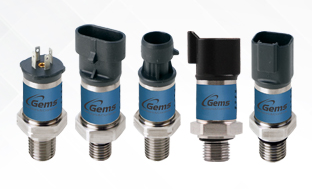Accuracy is defined as how close a measurement is to the actual, real world value. In the field of pressure sensors, accuracy is described as how close a sensor can produce an output in relation to the pressure that it is reading. There will always be a very small error in accuracy, but it is important to understand what those values are and how they can be utilized in the real world.
Accuracy is comprised of three parameters (or characteristics):
- Pressure, Non-linearity: How straight of a line is the electrical output from the device compared to the actual pressure value.
- Pressure, Hysteresis: After a system has a pressure change and returns to the normal condition, how a device lags when returning to its original condition.
- Pressure, Non-Repeatability: When a device is cycled numerous times, how close does it come to its original measurement.
With these three parameters, the accuracy of the sensor can be determined using Best Fit Straight Line (BFSL) calculations. BFSL is defined as the relationship between the calculated results and the actual measured results that minimizes the error but does not pass thru the end points.
For example:

Gems sensors 3100 Series Pressure Transducers specify their accuracy to be 0.25% FS (Full Scale) or less. Full Scale is the value from when there is no pressure on the sensor to what it’s maximum measuring range is, not the measured pressure.
For example:
- For a sensor with a 0 to 100 psi measuring range, Full Scale is 100 psi.
- If you are measuring 100 psi exactly, the output should read 100 psi +/- 0.25% of 100 psi or 100 psi +/- 0.25 psi.
- Still using the 0 to 100 psi measuring range but you are only measuring 10 psi, the accuracy of the output should be 10 psi +/- 0.25% of 100 psi (Full Scale) or 10 psi +/- 0.25 psi.
View the range of Pressure Sensors:
 SEARCH OUR RESOURCE CENTER
SEARCH OUR RESOURCE CENTER

